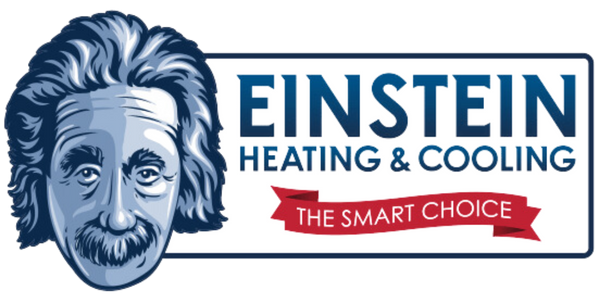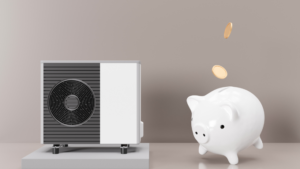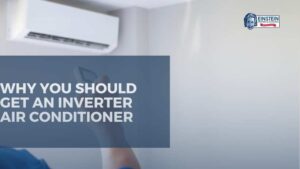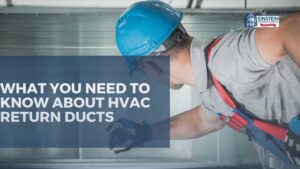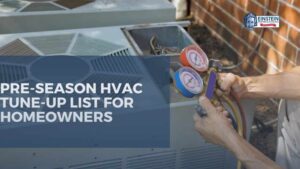A malfunctioning gas furnace during the cold months can be a homeowner’s worst nightmare. The discomfort of a chilly Phoenix home, coupled with potential safety concerns, makes furnace repair a top priority. In this blog post, we’ll walk you through the 10 best steps of troubleshooting and fixing your gas furnace.
What is a Gas Furnace?
A gas furnace is a heating system that uses natural gas or propane to generate heat for residential or commercial spaces. It plays a crucial role in maintaining indoor comfort during colder months by heating air and distributing it throughout a building via a ductwork system.
Benefits of a Gas Furnace:
Cost-Effective Operation:
- Gas furnaces are often more cost-effective to operate than electric counterparts. The price of natural gas or propane is generally lower than electricity, leading to reduced heating expenses.
High Energy Efficiency:
- Gas furnaces are known for their high energy efficiency, converting a significant portion of the fuel into usable heat. This efficiency results in better performance and lower energy bills.
Quick and Responsive Heating:
- Gas furnaces provide quick and responsive heating. They reach desired temperatures faster than some other heating systems, ensuring prompt warmth when needed.
Steps To Fix A Broken Gas Furnace:
1. Check the Thermostat Settings
Your thermostat is the control center of your heating system, dictating when and how much heat your furnace should generate. Incorrect settings or malfunctions can result in a chilly home. These thermostat malfunctions can be fixed using DIY thermostat repair but professional help may be needed.
- Inspect Temperature Settings
Begin by ensuring that your thermostat is set to the desired temperature. Sometimes, a simple adjustment is all that’s needed to restore comfort to your living space.
- Test the Batteries
For thermostats reliant on batteries, a weak or dead battery can cause erratic behavior. Regularly replace the batteries to maintain consistent and reliable thermostat operation.
- Verify the Mode
Check that your thermostat is set to the “heat” mode. Accidental changes or mode switches may lead to your system operating inefficiently or not at all.
2. Inspect the Furnace Power Supply
A stable power supply is essential for your gas furnace to function properly. Issues in this area can lead to a variety of heating problems.
- Check the Circuit Breaker
Inspect the circuit breaker connected to your furnace. If it’s tripped, resetting it may resolve the issue. Tripped breakers can result from power surges or electrical anomalies.
- Ensure the Furnace Switch is On
Locate the furnace switch, usually positioned near the unit, and confirm that it’s in the “on” position. If turned off, switching it on could be the key to restoring power to your furnace.
- Examine the Pilot Light
For furnaces with a pilot light, check to see if it’s lit. If not, follow the manufacturer’s instructions to relight it. A frequently extinguished pilot light may signify deeper issues.
3. Inspect the Air Filter
A clogged or dirty air filter can obstruct airflow, leading to reduced efficiency and potential breakdowns. Regularly checking and replacing the filter is crucial for optimal furnace performance.
- Locate the Air Filter
Identify the air filter’s location within the furnace system. It’s typically found in the air handler or near the furnace.
- Check for Dirt and Debris
Examine the filter for visible dirt and debris. If it’s dirty, replace it with a new one to facilitate proper airflow and enhance overall system efficiency.
- Follow the Recommended Replacement Schedule
Adhere to the manufacturer’s guidelines regarding the recommended replacement schedule for air filters. Regular replacements prevent furnace issues and maintain a healthy indoor environment.
4. Examine the Gas Supply
Without a consistent supply of gas, your furnace won’t function. Issues related to the gas supply can range from simple to complex.
- Confirm Gas Line Status
Ensure that the gas line supplying your furnace is open. If the valve is closed, turning it to the “on” position should resolve the issue.
- Check for Gas Leaks
Carefully inspect the area around your furnace for any signs of a gas odor. If detected, turn off the furnace immediately, evacuate your home, and contact the gas company or emergency services.
- Test the Gas Pressure
Low gas pressure can impact your furnace’s performance. If you suspect low pressure, it’s advisable to contact a professional technician for a thorough inspection.
5. Inspect the Ignition System
The ignition system is responsible for initiating the combustion process in a gas furnace. Malfunctions can lead to the need for gas furnace repair and heating problems.
- Identify the Ignition System Type
Different gas furnaces employ various ignition systems, including pilot lights, intermittent pilot lights, and electronic ignition systems. Identify the type in your furnace.
- Check for Pilot Light Issues
For furnaces with a pilot light, ensure it remains lit. If it frequently goes out, a faulty thermocouple or other issues may be at play.
- Test the Igniter
For furnaces with electronic ignition systems, examine the igniter for signs of wear or damage. If it’s malfunctioning, a replacement may be necessary.
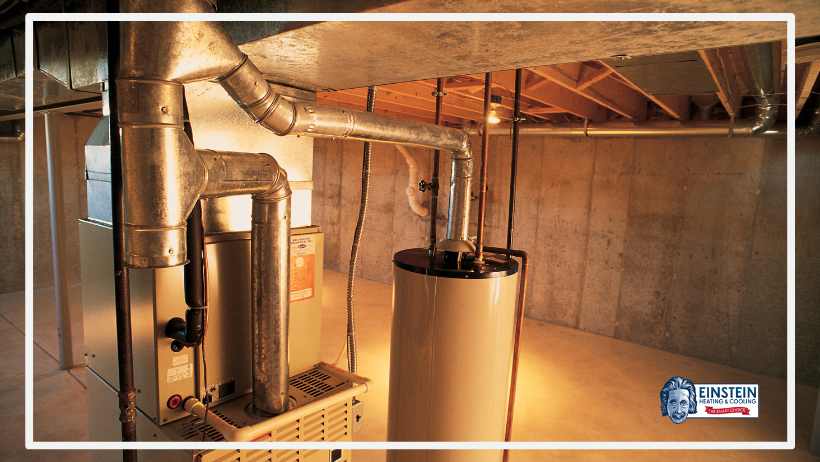
6. Inspect the Flame Sensor
The flame sensor is a critical safety component that ensures the furnace ignites and operates safely. A malfunctioning sensor can cause the furnace to shut down unexpectedly.
- Locate the Flame Sensor
Identify the flame sensor within the furnace. It’s typically a small rod located near the burner.
- Clean the Flame Sensor
Gently clean the flame sensor using fine-grit sandpaper. Accumulated dirt or residue can hinder its functionality and lead to shutdowns.
- Test for Proper Operation
After cleaning, test the furnace to ensure the flame sensor is working correctly. If issues persist, the sensor may require replacement.
7. Examine the Blower Motor
The blower motor plays a crucial role in distributing warm air throughout your home. Malfunctions can result in uneven heating or a complete lack of warmth.
- Listen for Unusual Noises
Upon starting the furnace, listen for any unusual noises emanating from the blower motor. Squealing or grinding sounds may indicate a problem.
- Inspect the Belts
If your furnace uses belts to connect the blower motor to other components, check for signs of wear and tear. Replace any damaged belts promptly to avoid further issues.
- Lubricate the Bearings
Some blower motors have bearings that may require lubrication. Refer to the manufacturer’s guidelines for the correct lubrication procedures to ensure smooth operation.
8. Evaluate the Ductwork
Leaky or blocked ductwork can compromise the efficiency of your heating system, resulting in uneven heating or no warmth in specific areas of your home. If your ductwork is broken, this can also lead to a furnace blowing cold air instead of heat, needing furnace repair.
- Inspect for Leaks
Visually inspect the ductwork for any visible leaks or gaps. Seal these openings with duct tape or mastic to optimize airflow.
- Clear Obstructions
Ensure that no obstructions are blocking the airflow through the ducts. Relocate furniture or other items that may impede the flow of warm air.
- Consider Professional Duct Cleaning
For heavily clogged ducts, consider hiring a comprehensive furnace service in Phoenix. Clean ducts not only improve heating efficiency but also enhance indoor air quality.
9. Check for Error Codes
Modern gas furnaces often feature diagnostic capabilities that display error codes. Understanding these codes can provide valuable insights into the nature of the problem.
- Refer to the Manual
Decode error messages by consulting your furnace’s manual. The manual contains information on common error codes and steps to troubleshoot and resolve issues.
- Reset the System
In some instances, a system reset may clear error codes. Follow the manufacturer’s instructions for resetting your specific furnace model to potentially resolve the issue.
- Contact Customer Support
If you’re unable to decipher error codes or if they remain unclear, reach out to the manufacturer’s customer support for expert assistance and guidance.
10. Schedule Professional Maintenance
While many furnace issues can be addressed through DIY troubleshooting, scheduling regular professional maintenance is essential to prevent future problems.
- Annual Inspections
Arrange for an annual inspection conducted by a qualified HVAC technician. This proactive approach helps identify potential issues before they escalate, ensuring optimal furnace operation.
- Clean and Tune-Up
Professional maintenance involves cleaning key components, such as burners and the heat exchanger, and performing a tune-up to optimize overall performance. This helps extend the lifespan of your gas furnace.
- Address Minor Repairs Promptly
During maintenance visits, if the technician identifies minor issues, address them promptly. Timely repairs prevent further damage and contribute to the longevity of your gas furnace, providing reliable warmth for years to come.
Why Get a Professional Furnace Repair?
Maintaining a comfortable and warm home during the colder months is crucial, and when your furnace needs repair, choosing the right HVAC service provider becomes paramount. If you’re searching for “furnace repair close to me” in Phoenix, Einstein Heating and Cooling is your best option. Einstein Heating and Cooling emerges as a standout choice for furnace repair needs, offering a combination of expertise, reliability, and customer-centric service that sets them apart in the industry.
1. Unparalleled Expertise:
Einstein Heating and Cooling boasts a team of highly skilled HVAC technicians with unparalleled expertise in furnace repair. This ensures that they can diagnose and fix a wide array of furnace issues promptly and effectively.
2. Prompt and Reliable Service:
When your furnace malfunctions, time is of the essence. Einstein Heating and Cooling understands the urgency of furnace repairs and is committed to providing prompt and reliable service.
3. Transparent and Honest Assessments:
One of the hallmarks of Einstein Heating and Cooling is their commitment to transparency. When they assess your furnace, you can trust that their technicians will provide honest and straightforward evaluations.
4. Customer-Centric Approach:
What sets Einstein Heating and Cooling apart is their unwavering commitment to customer satisfaction. From the moment you contact them for furnace repair, you’ll experience a customer-centric approach that prioritizes your comfort and peace of mind.
Conclusion
Troubleshooting and fixing a gas furnace demand a systematic and thorough approach. By following the steps outlined in this guide, you can do a proper furnace repair in Phoenix, regain warmth in your home, and avoid the inconvenience of a malfunctioning heating system. Prioritize safety throughout the process, and if uncertainty arises, seek professional assistance from Einstein Heating and Cooling promptly.
